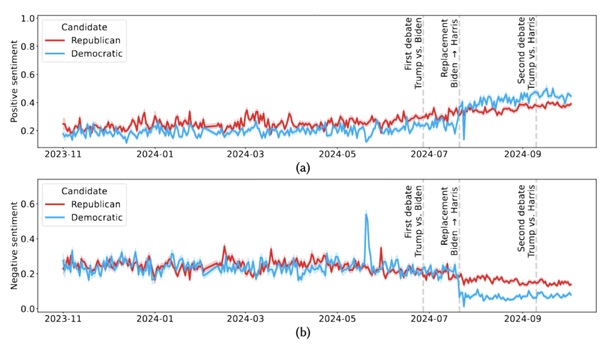
On Wednesday 30 October 2024, Uni.lu published a study on the effects on the social media platform, TikTok, of President Joe Biden’s withdrawal from the 2024 US presidential race
In recent years, TikTok has emerged as a significant force in political campaigning, reshaping how candidates influence public opinion; researchers at the University of Luxembourg's Interdisciplinary Centre for Security, Reliability and Trust (SnT) studied the impact of President Biden’s withdrawal from the race on the social media platform.
The results are reported to clearly show an effect of this decision on the social network dedicated to video content.
A turning point for sentiment and engagement on TikTok
The study, spearheaded by Yuwei Chuai and Gabriele Lenzini, encompassed an extensive review of 680,609 TikTok videos, accruing over four billion views, 23 million comments, 31 million shares, and 335 million likes from 1 November 2023 to 6 October 2024.
These videos included official political party content as well as content generated by individuals, where either the Republican or the Democratic candidate was mentioned.
The goal of the study was to understand the effect of President Biden’s withdrawal from the US elections 2024 on user sentiment on TikTok. Positive sentiment is based on the video description and voice-to-text transcript, these are included in the original video post. This sentiment can potentially affect the sentiments in comments to the post.
Before President Biden withdrew from the race, videos that featured Republican candidate Donald Trump showed higher positive sentiment and lower negative sentiment compared to those that featured his Democratic opponent. But the scenario flipped dramatically post- President Biden’s exit: “Positive sentiment in video messages featuring the Democratic candidate rose by 46.8% and negative sentiment fell by 52%” Mr Chuai observed.
The increase in engagement was particularly notable. Videos mentioning either the Democratic candidate (Kamala Harris) or the Republican candidate (Donald Trump) consistently received more engagement, being 53.3% more likely to be shared and 77.4% more likely to be liked.
From Data Collection to viral campaign strategies
The researchers developed a rigorous methodology for collecting data from TikTok’s open official data access interface (API). They set up search queries to randomly select videos mentioning either the Republican or Democratic candidates and collected data multiple times. This approach helped minimise bias and ensure a representative sample of political discourse on TikTok, capturing a wide array of user interactions and reactions for over a year.
However, this study focuses solely on TikTok, whose API is open to scientists. The findings could differ across different online platforms, highlighting the need for more social media platforms to provide accessible data for scientific research.
“The current closure of certain APIs is a concern” said Valérie Schafer, Professor at The Luxembourg Centre for Contemporary and Digital History (C²DH) who specialises in the history of computing, telecommunications and data networks. Ms Schafer led a recent research project on the history on online virality and noted that some analyses conducted on social media (and notably on Twitter) would no longer be possible.
She also highlighted the need for qualitative studies, for instance on user creativity. Ms Schafer referred to the reactions to the false claim made by Mr Trump during ABC’s Presidential Debate, asserting that illegal immigrants had been eating domestic pets. This allegation triggered a strong wave of online reactions, memes, parodic videos and songs.
“This presidential campaign clearly reinforces the existing trend of fake news and going viral. There are some interesting, newer elements, like the strong participation of influencers or live streaming on platforms like Twitch. New technologies are also in the mix: audio and visual deepfakes and AI-generated content are clearly present in the campaign” stated Schafer.








